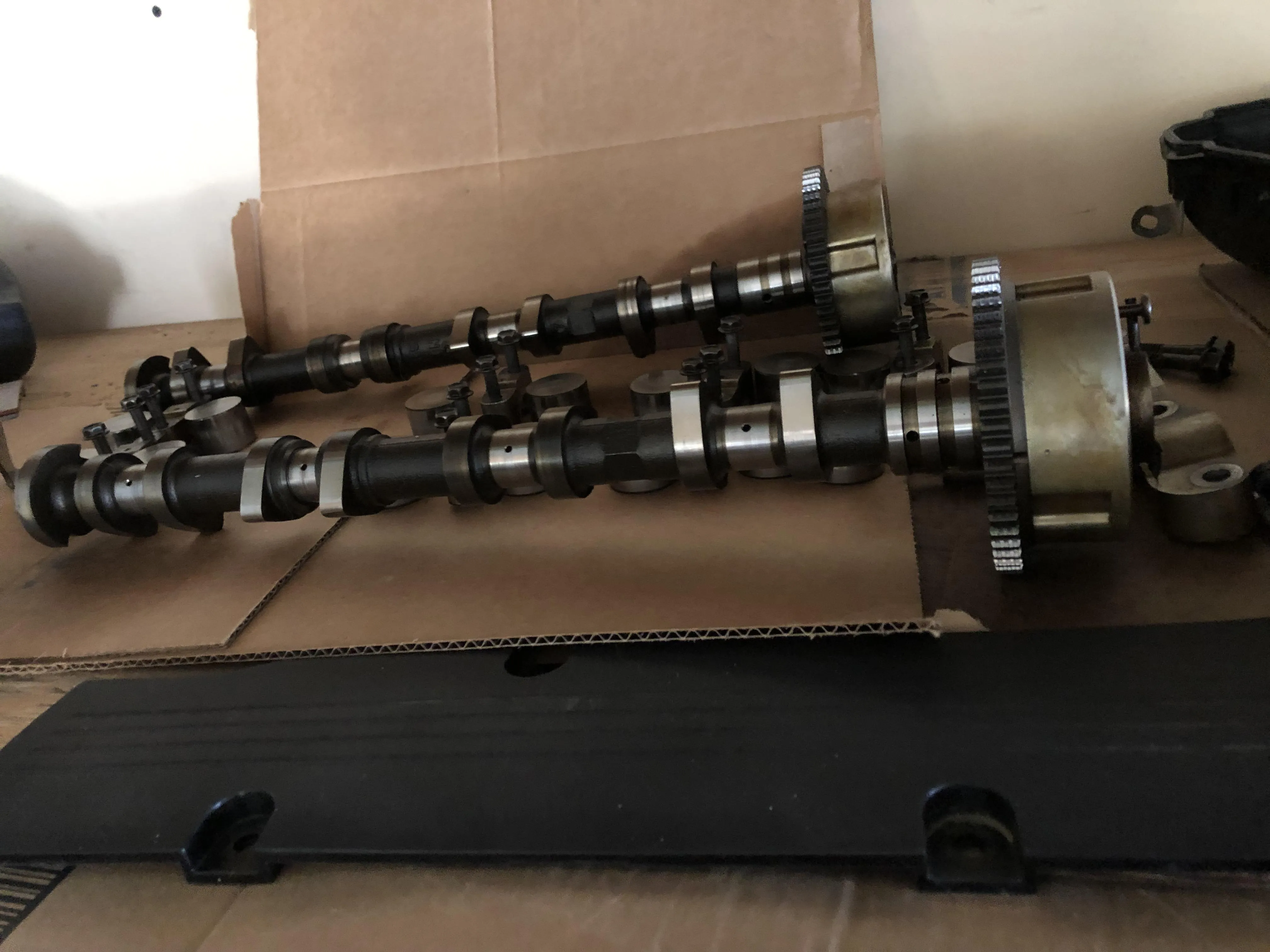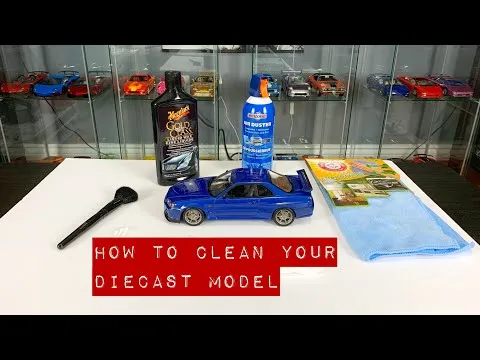What You Need to Clean Diecast Models
Maintaining your diecast model collection requires careful attention to detail and the right tools. Regular cleaning prevents the build-up of dust, grime, and potential damage that can detract from their value and appearance. The best way to clean diecast models involves understanding the materials and using gentle methods to preserve their finish. This guide will help you gather everything you need to keep your models looking their best, from basic supplies to specialized tools for tougher jobs. Having the right equipment ensures you can clean your models effectively without causing any harm, allowing you to enjoy your collection for years to come.
Supplies for Effective Cleaning
Gentle Soaps and Detergents

When cleaning diecast models, the choice of cleaning agent is crucial. Avoid harsh chemicals and opt for gentle soaps or detergents specifically designed for delicate surfaces. Dish soap diluted in water is often a good starting point. These soaps are formulated to lift dirt and grime without damaging the paint or decals. Always test any cleaning solution on a small, inconspicuous area of the model first to ensure it doesn’t cause discoloration or damage. This careful approach will protect the integrity of your models while effectively cleaning them.
Soft Cloths and Microfiber
Microfiber cloths are a must-have for cleaning diecast models. Their soft, non-abrasive texture ensures they won’t scratch the delicate paint finish. Use a clean, dry microfiber cloth for dusting and general cleaning. For wet cleaning, lightly dampen a microfiber cloth with the soap solution, making sure to wring out excess water to prevent water spots. Avoid using paper towels or rough cloths, as these can scratch the surface of the models. Having a supply of clean microfiber cloths ensures you can maintain your models without causing any harm.
Cleaning Tools and Accessories
In addition to cloths and soaps, several other tools can help you clean your diecast models effectively. Cotton swabs or Q-tips are ideal for reaching tight spots like around windows, grilles, and wheels. A soft-bristled brush can be used to gently remove dust from hard-to-reach areas. For removing more stubborn grime, a specialized detailing brush can be useful, but ensure it’s soft enough to avoid scratching the paint. Also consider using a small container of distilled water to rinse any cleaning tools. A well-equipped cleaning kit will make the process easier and more efficient.
7 Tips to Clean Your Diecast Models

Dusting Your Models Regularly
Dusting is the first and most crucial step in maintaining your diecast models. Dust can accumulate quickly and, over time, can scratch the surface. Use a soft brush or microfiber cloth to dust your models regularly, ideally once a week or more frequently if they are displayed in an area prone to dust. Always dust gently, using light strokes to avoid damaging any delicate parts. Regular dusting prevents dust from building up and making cleaning more difficult later. A clean display area is the key to keeping your models looking their best.
Using Mild Soap and Water
For more thorough cleaning, use a mild soap and water solution. Dilute a small amount of dish soap in a bowl of clean water. Dip a microfiber cloth into the solution and gently wipe the model’s surface. Avoid oversaturating the cloth, as excessive water can cause spots or damage the paint. Work in small sections, rinsing the cloth frequently. After cleaning, use a clean, dry microfiber cloth to dry the model completely. This will prevent water spots and leave your models looking pristine. This method is ideal for removing fingerprints, light grime, and other everyday messes.
Avoiding Harsh Chemicals

Harsh chemicals can severely damage your diecast models. Avoid using solvents, abrasive cleaners, or strong detergents. These can strip paint, dissolve decals, and dull the finish. Always read the labels of any cleaning products before use, and if in doubt, test them on a hidden area of the model. Isopropyl alcohol (IPA) can be used in very diluted concentrations for cleaning specific areas, but use it cautiously and sparingly. The best way to clean diecast is with gentle products to avoid damaging the original finish and details of the model.
Cleaning the Wheels and Tires
Wheels and tires often accumulate dirt and grime, so they require specific attention. Use a soft brush or cotton swab dipped in the mild soap solution to clean the wheels and tires. Be gentle, as aggressive cleaning can damage the details. For stubborn grime, you might use a slightly stronger solution, but always test it on a small area first. After cleaning, dry the wheels and tires thoroughly to prevent corrosion or damage. This process helps maintain the realistic appearance of your models and prevents deterioration of these components.
Dealing with Stubborn Dirt and Grime
Some models may have stubborn dirt or grime that requires extra care. For these situations, try using a specialized detailing clay bar designed for automotive detailing. This can gently lift away dirt without scratching the paint. Be sure to lubricate the area with a detailing spray before using the clay bar. Another option is to use a very soft toothbrush with a gentle cleaning solution. Work carefully in the affected areas and rinse thoroughly. Patience and a gentle approach are essential when dealing with tough grime.
Polishing for a Shiny Finish

Polishing can restore shine and remove minor imperfections from your diecast models. Use a high-quality car wax or polish designed for delicate finishes. Apply the polish with a soft cloth, following the manufacturer’s instructions. Buff the model gently to a shine, ensuring you remove all residue. Polishing not only enhances the appearance but also provides a protective layer. However, avoid over-polishing, as this can wear down the paint over time. When done correctly, polishing can dramatically improve the look of your models.
Storing Your Models Properly
Proper storage is critical for protecting your models after cleaning. Store your models in a cool, dry place away from direct sunlight and extreme temperatures. Consider using display cases or dust-proof containers to protect them from dust and damage. If you have the original boxes, use them for storage, as they often provide excellent protection. Avoid storing models in areas with high humidity, which can lead to corrosion or damage. Proper storage ensures that your models remain in excellent condition and preserve their value.
Maintaining and Protecting Your Collection
Routine Inspections and Maintenance

Regularly inspect your diecast models for any signs of damage, such as paint chips, loose parts, or discoloration. Addressing issues promptly can prevent further deterioration. Check the wheels and tires for wear and tear, and lubricate any moving parts if necessary. A routine maintenance schedule can extend the life of your models and keep them in excellent condition. Take note of any changes or issues, and address them as soon as they arise to prevent further damage and maintain the value of your collection.
Protecting from Sunlight and Heat
Direct sunlight and excessive heat can cause significant damage to diecast models. Sunlight can fade paint and decals, while heat can warp plastic parts or loosen adhesives. Store your models away from direct sunlight and avoid displaying them in areas that get overly hot. If you use display cases, consider using UV-protective glass or film to minimize light exposure. Careful attention to the storage environment can help preserve the color and integrity of your models for years to come.
Displaying Your Models Safely
When displaying your diecast models, choose a safe location that protects them from accidental damage. Avoid placing them in high-traffic areas or where they could be easily knocked over. Use sturdy display cases or shelves to provide protection from dust and potential impacts. Consider using museum putty or other adhesives to secure the models in place. Proper display not only enhances the visual appeal of your collection but also helps protect your investment. Careful planning and attention to detail can make all the difference in preserving your models’ value.
